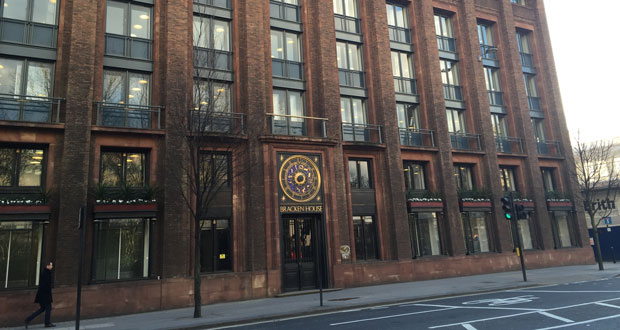
Image CC credit: Matt Brown -flickr
Climate tech startup business, OakTree Power, has developed a bespoke climate technology solution for the Financial Times to reduce energy at its headquarters in London, Bracken House.
The five year agreement with OakTree Power will see Bracken House modulate the consumption of non-essential electricity to accelerate net-zero goals by tapping into previous unavoidable CO2 emissions. Through this scheme, the Financial Times will ease congestions on the local electricity network in Paternoster Square.
The scheme is deployed by a smart IoT controller that has been integrated with the organisation’s own building control systems, which will enable OakTree Power to identify non-critical electricity consumption and intelligently modulate small amounts of energy usage. These reductions will be conducted in non-critical electrical plants and equipment such as pumps, fans and air conditioning chillers for short periods, without impacting performance.
Chantel Scheepers, CEO of OakTree Power, said: “Net Zero targets are a national objective that needs to be taken incredibly seriously by all UK organisations. We’re delighted to be working with such a prestigious organisation that has shown a great commitment to lead on this front, recognising the need to change and adapt to achieve the UK’s Net Zero goals.
“We expect this project to become a turning point for OakTree Power and other businesses with real estate space to embrace the Net Zero commitment and adopt the scheme. If every 200,000 square feet building in London did so, it would be the equivalent of taking 45,000 petrol cars off the road in terms of CO2 reductions, so we all should be helping the country move away from dirty carbon intensive generation and towards a renewable & sustainable future.”
While some personnel are finally returning to the office – the great majority of organisations (up to 83 per cent) anticipate a hybrid mix of on-premises and working from home to continue for the foreseeable future.
This means that when it comes to providing access to the workplace, where once it was simply enough to maintain a welcoming reception for visitors, organisations today must also keep a close eye on access permissions in real-time to keep buildings safe and secure while ensuring they comply with compliance.
Pitney Bowes Smart Access Management in association with FMJ has produced a new White Paper which explains how to create a welcoming, actively managed environment for authorised people.
It explains how new Smart Access Management™ (SAM) delivers a complete, real-time and data-driven view of all your people, visitors and contractors, to help give you greater control and visibility.
To download the white paper click here.




